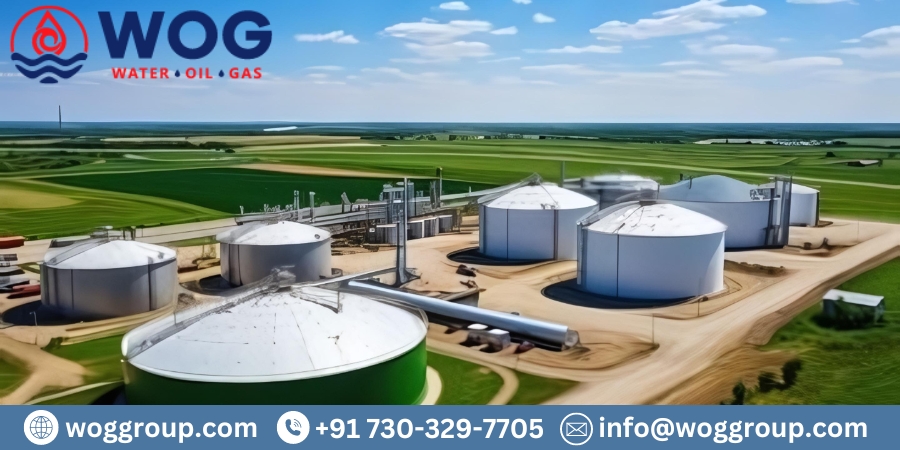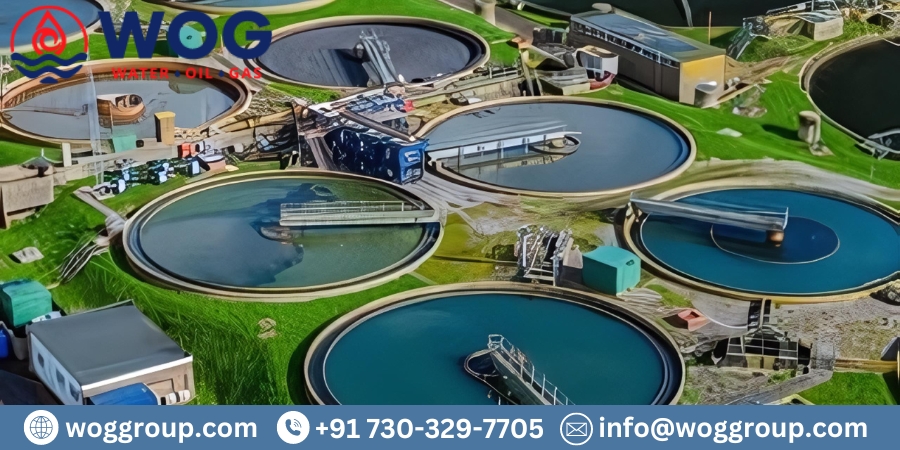We love delivering waste management and water recycling solutions as wastewater treatment suppliers. The anaerobic digester system is a cutting-edge technology. This technology is crucial to wastewater treatment, especially in industry. Anaerobic digesters are a promising solution to turn waste into valuable resources as enterprises face sustainability constraints. Understanding this technology lets you see how it can turn waste into electricity and promote sustainability.
The benefits of anaerobic digester systems go beyond waste transformation and energy production. Waste reuse helps build a circular economy. This article will discuss anaerobic digester systems, their benefits, and their potential to revolutionize waste management.
Anaerobic digesters are what?
A biological treatment device called an anaerobic digester system breaks down organic materials without oxygen. These microorganisms thrive in anaerobic conditions. Organic waste is converted into biogas in an anaerobic digester to generate renewable energy.
Common applications for anaerobic digesters include:
- They remediate industrial wastewater.
- Waste management: They generate energy from manure and crop wastes.
- They process organic restaurant and food processing waste.
- Anaerobic digesters decrease trash and generate energy, making them crucial to modern waste treatment systems.
How Anaerobic Digesters Work
Anaerobic digestion involves hydrolysis, acidogenesis, acetogenesis, and methanogenesis. Here’s a simple summary of how it works:
- Hydrolysis
This stage breaks down complex organic molecules like lipids, proteins, and carbohydrates into simpler ones. Microorganism-produced hydrolytic enzymes do this.
Hydrolysis turns big molecules into sugars, amino acids, and fatty acids. This essential phase prepares organic stuff for digestion.
- Acidogenesis
Acidogenesis converts hydrolysis-produced simple molecules into volatile fatty acids, hydrogen, and carbon dioxide. This is done by fermentative bacteria.
The following stage of anaerobic digestion uses volatile fatty acids as substrates. Creating methanogenic bacteria-friendly environments requires this step.
- Acetogenesis
Volatile fatty acids, hydrogen, and carbon dioxide are transformed into acetic acid during acetogenesis. This procedure uses acetogenic bacteria to convert intermediate products into valuable chemicals.
Methanogens use acetic acid as their final substrate, making it crucial.
- Methanogenesis
Magic happens in methanogenesis, the ultimate stage. Methanogenic bacteria convert acetic acid, hydrogen, and carbon dioxide into biogas, mostly methane.
Biogas can be harvested and used for renewable energy. Heating, power, and motor fuel can be made from methane.
Advantages of Anaerobic Digesters
Anaerobic digesters benefit wastewater treatment and industrial activities. Some important benefits are:
- Energy Generation
Renewable energy from anaerobic digesters is a major benefit. Biogas can power engines, turbines, and boilers, including industrial power plants.
Facilities can cut fossil fuel use and energy expenses by transforming trash into energy.
- Reduce Waste
Organic waste is reduced via anaerobic digesters. The method reduces landfill waste by breaking down garbage.
The food industry and agriculture, which generate a lot of organic waste, need this waste reduction.
- Recycle Water
Water recycling is possible with anaerobic digestion. The digestate, the liquid left after digestion, can be treated to remove pollutants.
This clean water can be reused for agriculture or industrial activities, enabling sustainable water management.
- Environmental Improvement
Waste treatment through anaerobic digestion can drastically minimize facilities’ environmental impact. Waste decomposition releases methane, which the procedure captures to reduce greenhouse gas emissions.
The system also treats wastewater before discharge to reduce water pollution.
- Nutrient Recovery
Anaerobic digestion produces nutrient-rich digestate, which is ideal for agricultural use. Nutrient recovery promotes sustainable farming and lowers synthetic fertilizer use.
Reusing organic waste nutrients helps firms create a circular economy.
Industrial Water Treatment with Anaerobic Digesters
Many firms utilize anaerobic digesters to treat industrial water. Some specific uses:
- The food and beverage industry
Peels, leftover food, and processing byproducts are a major source of organic waste in the food and beverage industry. Waste management and biogas production are possible using anaerobic digesters.
- Farming
Agriculture uses anaerobic digesters for livestock manure. Farmers can generate energy and reduce odours and environmental concerns by converting manure into biogas.
- Wastewater Treatment Facilities
Many municipal wastewater treatment plants process sewage sludge with anaerobic digesters. This procedure minimizes sludge and creates electricity for the treatment plant.
- Paper and pulp
Organic waste and process water are abundant in the pulp and paper sector. Anaerobic digesters recycle water and generate renewable energy by treating this waste.
- Industrial Process Water Treatment
Anaerobic digesters are increasingly employed to clean industrial process water. They recycle organic-contaminated process water and reduce industrial emissions.
Issues and Considerations
Anaerobic digesters have advantages and drawbacks:
- Starting Costs
Installing an anaerobic digester system might be costly. Energy and trash disposal reductions can balance this expense over time.
- Operations Management
Anaerobic digesters need careful supervision. Monitor temperature, pH, and retention time for maximum performance.
- Waste Management
Digestate must be handled properly. It is valuable, but it must be handled properly to avoid contamination and assure safety.
- Regulation Compliance
Local waste treatment and energy production regulations must be followed. Facility anaerobic digestion systems must meet all specifications.
Conclusion
Anaerobic digesters are effective waste treatment and water recycling systems. We at WOG Group, value sustainable and efficient wastewater treatment plants systems as a supplier. Businesses may make better waste management decisions by understanding anaerobic digesters and their benefits for industrial processes. These solutions eliminate waste, generate renewable energy, and improve sustainability. Buying an anaerobic digestion system is a wise waste treatment decision and a commitment to sustainability. Industries may advocate for responsible waste management and environmental stewardship by adopting this technology. We can make future generations’ world cleaner and greener.

